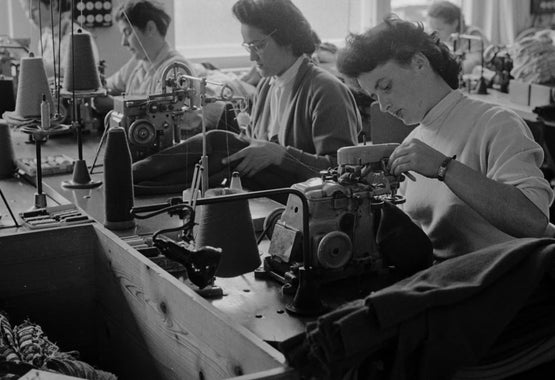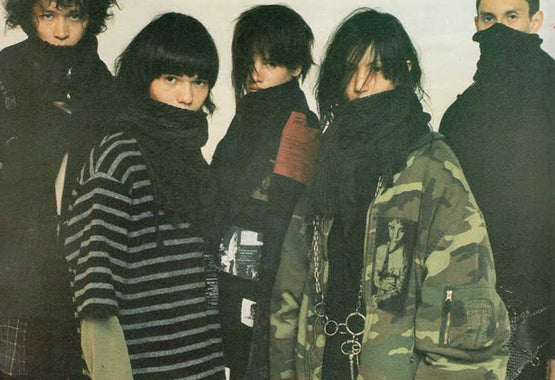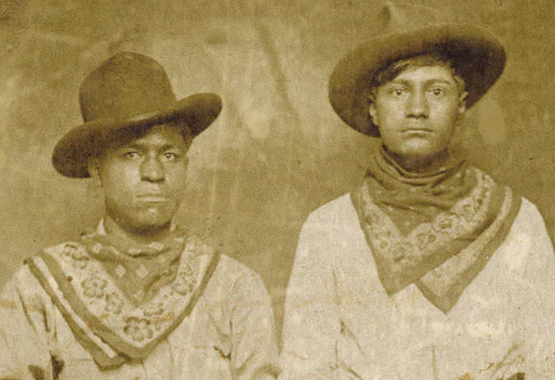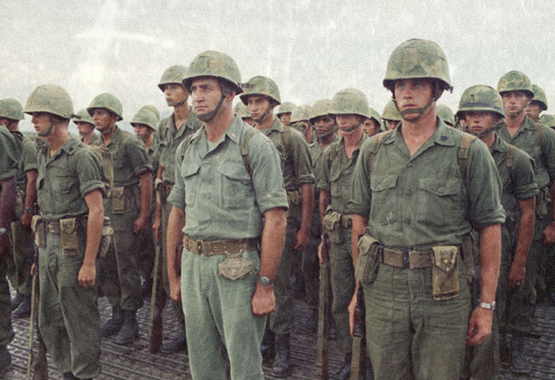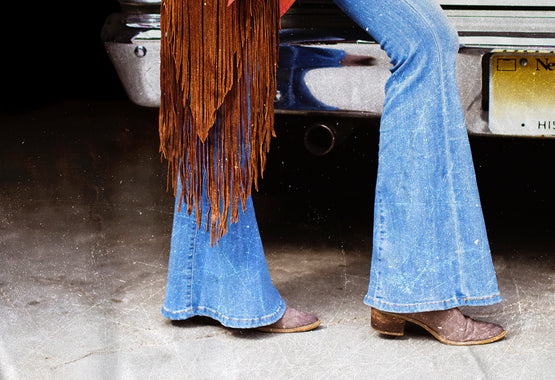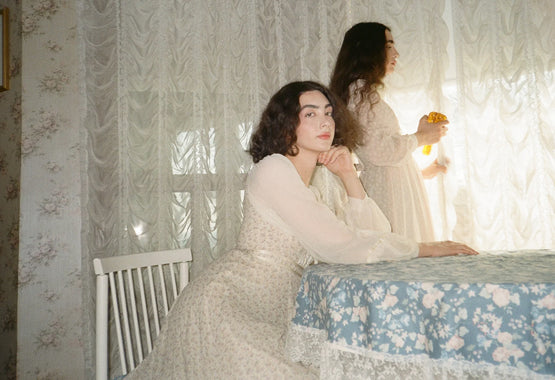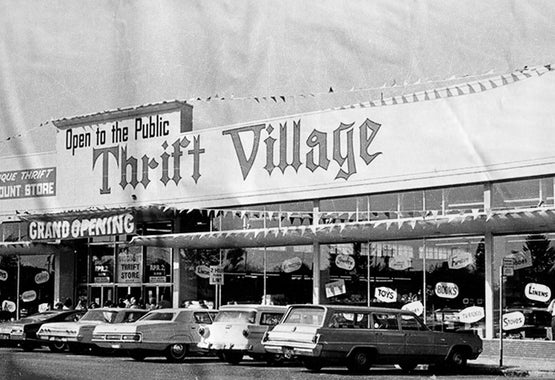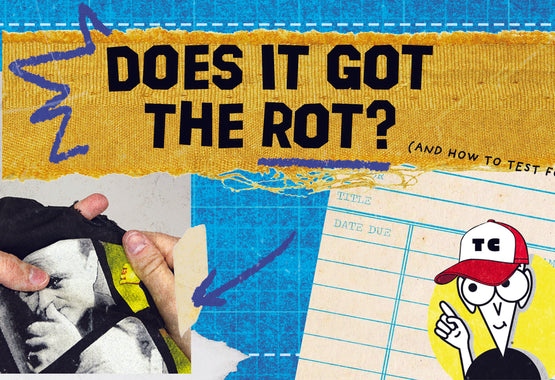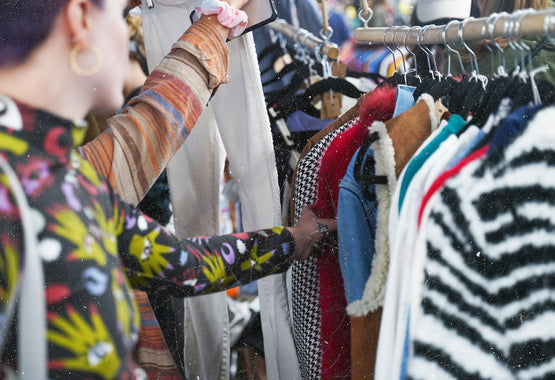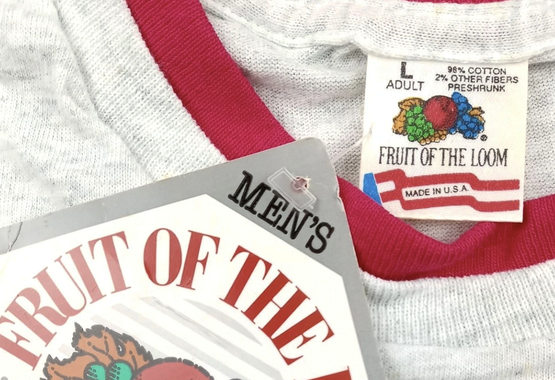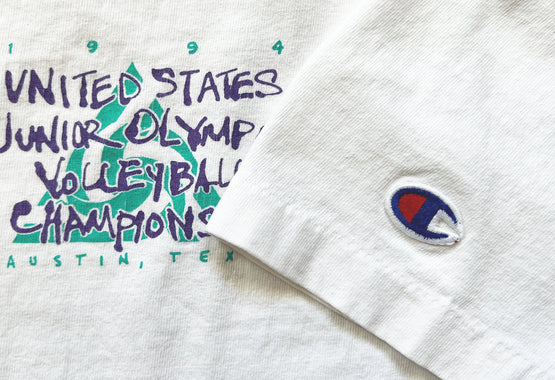The Differences Between Single Stitch and Double Stitch


Staring down the beginning path of a vintage clothing lifestyle can be a nightmare to navigate. It’s kind of like you’re back in medieval times standing stoic, arms heavy looking up at a mountain of towering castle walls. Your toes instinctively inch closer to a gator-infested moat as you listen to large groups of thrifters inside laughing and dancing gayly around the square, arms locked, bodies writhing within cotton and rayon blends of fabric. You pine to frolic amongst them, the thrifty ones. But one thing is standing in your way, a massive oak gate whimsy with all its mid-century inspired gold detailing across the grain. To open it, you must answer this one community riddle.
Is that t-shirt single stitch bro?!
Doomed. You haven’t got a clue what the thrifty ones are asking of you. Your reselling side-hustle vanishes quicker than the dream began. Cursed. You’re now stuck with that meaningless office job forever … ever … ever …
A slightly dramatic opening to a simple question, sure, but more often than not the answer feels like it’s some sort of magic key into the world of old clothing retail. People really care. But it isn’t exactly random, because the kind of stitching manufacturers used through the decades is often an important indicator to what era its from.
To simplify it, look at the sleeves on the t-shirt you’re wearing now. Does it have two strands of thread running around the opening or is there one? Double or single. If it has two, chances are good it’s a newer shirt (late-‘90s and beyond). If there’s one, it’s older, likely vintage.

[clearly labeled 1994, this vintage Champion tee is a no-brainer to date]
Now of course this isn’t a perfect way of modeling the age of clothing, but it’s a start. It is the easiest, however, which is why it’s become such an important question people ask when verifying the legitimacy of an item. Think about strolling down the aisle in a thrift store. If you’ve only got a few minutes to spare, simply glancing at the unending ocean of sleeves is one way to make quick work of the section. Depending on your location, one or two older shirts are bound to catch your eye without a whole lot of mental strain on your end.
Why people care so much is a whole other issue. Seeing one straight line around the sleeve or bottom hem isn’t as common, which gives the shirt more value to the overall picture of collectible clothing. Less means rare. Rare means desired. Desired means valuable. Pretty easy Econ 101 if someone’s in it for the extra monthly income.
Jimmy Applegath is the founder of DEFUNKD, an online vintage t-shirt archive and a site most thrifters land on at least once or twice a week while researching their inventory. Last year, he wrote a blog post for the site and lays out the concept pretty clearly.
“These days the term Single-Stitch is standard,” he says. “There are currently 25k eBay listings with ‘single stitch’ in the title, and Bidstitch implemented a field for sellers to specify what stitching the t-shirt features. During an IG live auction, hosts often hype single-stitch pieces. Heck, it even has its own slang, single-single, single-dingle. Undoubtedly, single-stitch construction is sought after and considered a premium feature of a vintage t-shirt.”
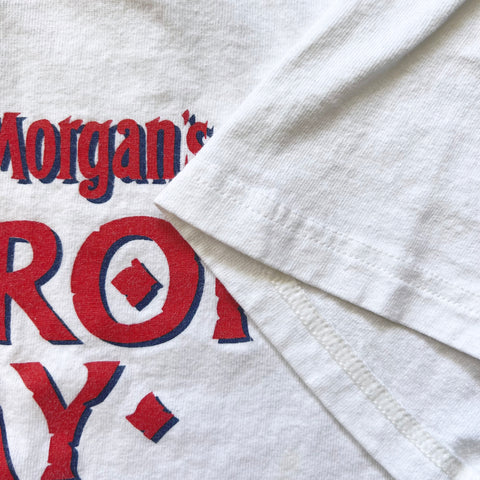
[Captain Morgan Parrot Bay Rum early 2000s promotional tee]
It isn’t simply aesthetics either. There are plenty of benefits to a single stitch finish. Look at the backside, it looks different than the front. What the back part functions as is a type of lock for the front. A lock stitch. It holds the thread in place even when you snag it or something happens to the hem. The newer, quicker double stitch does not do this and can unravel the entire way if it’s damaged. The single stitch mimics the most durable of all stitches, the backstitch.
The consensus as to why factories started using the quicker, sloppier stitch in the mid-1990s isn’t exactly concrete. Some think it was just the way machines progressed into more efficiency. Others cite the ability to cover flaws in the double stitch process, doing away with talented seamsters who had to pay more attention to fine detail while sewing. Even others credit the use to the transition into cheaper fabrics, needing double the contact points to hold everything together.
The most likely reason it happened (and those three above are probably also true at the same time to some degree) is two-fold: The North American Trade Agreement (NAFTA) and China spending much of the ‘80s and ‘90s moving into the manufacturing powerhouse it is today.
Implemented in 1994, NAFTA began as a trade agreement between The United States, Canada and Mexico to do away with certain tariffs and taxes so that trade could more easily flow between countries. It’s no coincidence you see a lot of late-‘90s items say something like “Made in Mexico of U.S. Materials” or whatever. It was all part of a movement corporations were embarking on during the ‘80s and ‘90s to find cheaper labor, moving factories to all corners of the world in a quest to satiate Wall Street and its shareholders.
It’s called The Decade of Greed for a reason.
Not really a coincidence either that around this time most of the global economy began to migrate to China for its manufactured goods. The country spent years crafting an image that the business world latched onto, one of quick turnarounds, unending supply of cheap labor, brilliant engineers and — probably the best thing they could offer — silence.
The story here is a far greater series of socio- and political economics, pretty far removed from simple stitching on a shirt … but you get the idea. Just take from this that the world's economies altered drastically between the ‘80s and ‘90s and we’re not so far removed from those decades that it’s worked itself out. Fast-fashion is a direct consequence of all this, and isn’t playing out the best in terms of environmental concern. Or clothing's actual longevity (cheap = trash). The evolution of clothing tells a story.
Now, if you’re just getting into vintage fashion and find yourself at the golden gates wanting in to dance with the rest of ‘em, there you have it, an initial lesson in the detail-oriented industry of resold clothing. Again, because there were so many manufacturers with just a many methods behind closed doors, it’s hard to pin down exactly what was going on by just looking at a line of thread. Understanding the larger picture, however, gives consumers a sense of why these pieces are so important (and sometimes so valuable) and how we can use textile’s long evolving history to understand our place in the supply chain.

